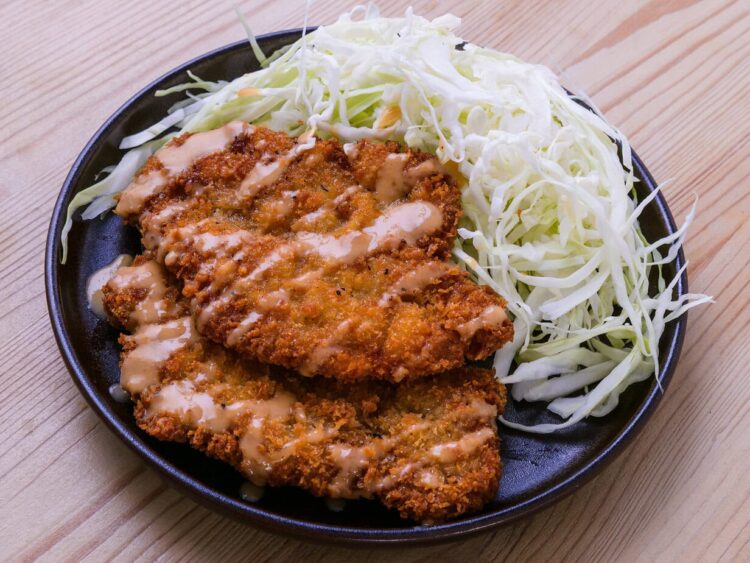The famous Korean breaded pork, but in its traditional Korean version! A delicacy with a simply divine sauce
The first thing you notice is the size: a golden oval that takes up the entire plate. Under the blade, the crust yields with a slight crackle as a brown, buttery sauce flows towards the shredded cabbage and the neat dome of rice.
For many Koreans, each bite awakens memories of elementary school lunches, highway stops, and birthdays celebrated in old gyeongyangshik restaurants in Seoul. Unlike the Japanese tonkatsu, which is thick today, classic Korean donkatsu is thin, wide, and generously sauced: an intact memory of the 1970s, still as nostalgic as it is affordable in an ordinary family kitchen.
The Origins of Donkatsu Pork
The donkatsu’s passport is covered with stamps. At the end of the 19th century, the Viennese schnitzel traveled east and inspired Japanese cooks, who fried pork in panko before coating it with a sweet Worcestershire sauce.
During the Japanese occupation of Korea (1910-1945), the dish, then called tonkatsu, appeared in the first yangsik cafes, where Western dishes coexisted with cream soups and fork-and-knife etiquette. A Korean cookbook from 1924 published the first local recipe for cutlet, prepared with thin slices of beef rather than pork.

The dish truly naturalized in the 1960s-1970s, “the golden age of gyeongyangshik restaurants. Cooks pounded cheap loins until” they covered the plate, replaced bottled sauce with a ketchup-flavored demi-glace, and served XL-sized portions to hungry office workers. In the 1990s, the thick Japanese tonkatsu returned via trendy chains; however, the original Korean version, thin and abundantly sauced, persists as both a retro restaurant classic and the ultimate comfort food.
The Anatomy of Authentic Donkatsu
At the heart of the dish is a pork loin about half a centimeter “thick, flattened until” it covers the plate to cook in a few minutes and stay crispy from edge to edge. The coating requires only a single pass in medium-grain breadcrumbs.
A gentle fry at 170°C seals in the juices; no second immersion is necessary, although some (like me) prefer two to maximize crispiness.
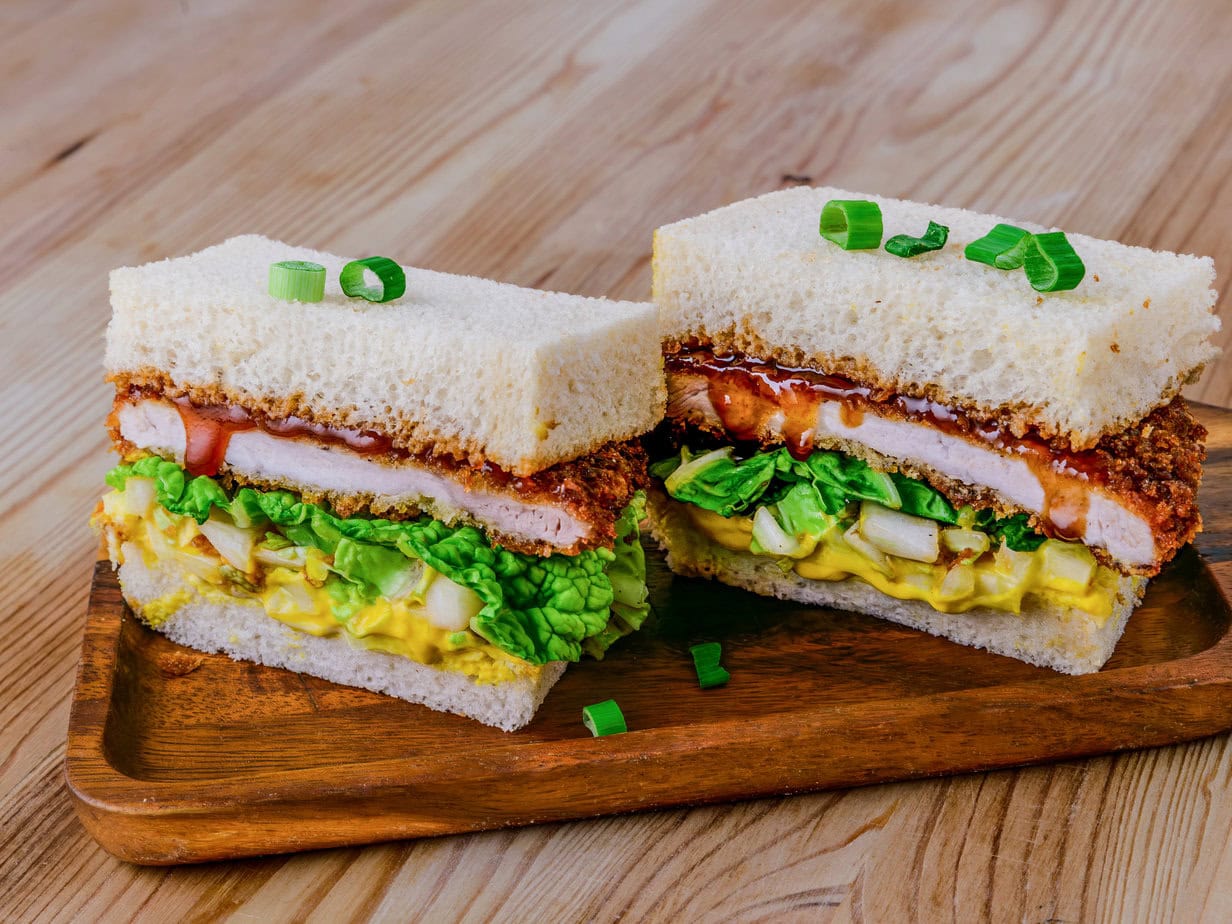
What really distinguishes the Korean dish is the brown sauce: a roux thinned with broth, enriched with ketchup, Worcestershire sauce, and a touch of sugar, until it reaches a velvety consistency that coats the spoon.
The cutlet arrives whole, accompanied by a mountain of coleslaw, a dome of rice, and the retro Western quartet: macaroni salad or potato salad, baked beans in tomato sauce, bright yellow danmuji pickles, and, depending on the establishment, kimchi and raw green chili. Knife and fork required, chopsticks optional, nostalgia guaranteed.
Mastering Homemade Donkatsu
Guiding Principles
The success of a donkatsu relies on a few simple principles rather than complex technique. Start with a boneless pork loin, economical but capable of staying tender once flattened. The meat is widened to the size of the plate, lightly seasoned, and, in many Korean kitchens, briefly soaked in milk to soften the fibers and mitigate any animal odor.
The breading is minimalist: a thin layer of flour to dry the surface, a dip in beaten egg for adhesion, then a single coating of medium-grain breadcrumbs pressed firmly so it cooks evenly.
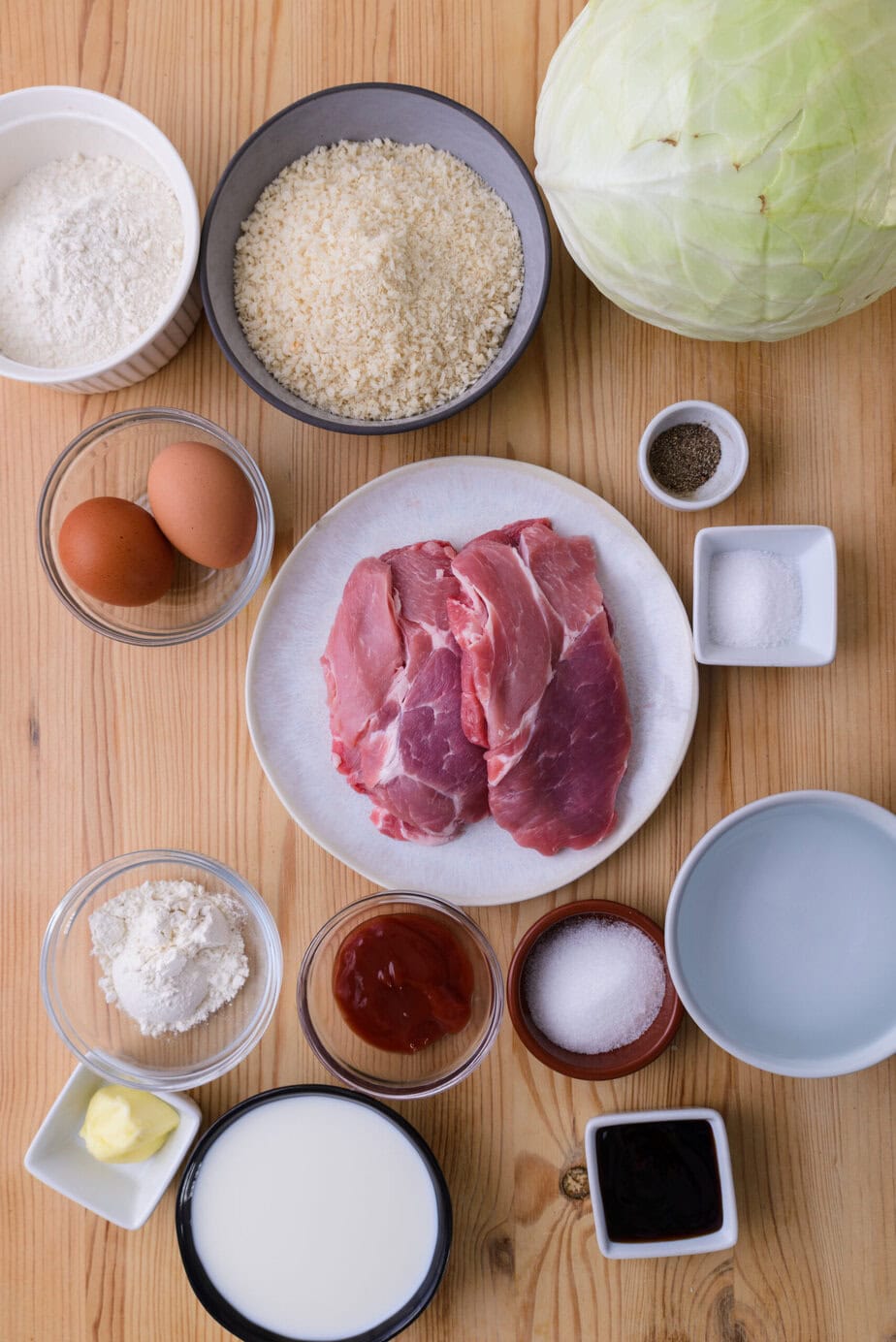
The Retro Plate: Side Dishes, Rituals
A steaming bowl of corn chowder often precedes the main course, reminiscent of a time when restaurants promised Western elegance at the price of a lunch box. On the tray, cabbage ribbons crunch under a zigzag of ketchup and mayonnaise, while sweet white beans and mayonnaise-rich macaroni salad offer a cafeteria-like charm.
The rice arrives molded into a neat half-sphere, its steam fogging the metal plate. Beside it, the fluorescent yellow danmuji tickles the nose with its vinegar, and if you’re in a truck stop, raw green chilies and a bit of ssamjang wait to cut through the richness. The service aims to be convivial: cut a piece of pork, slide it into the sauce, follow with crunchy cabbage, then reset your palate with a pickle or chili. The gesture is as important as the taste.
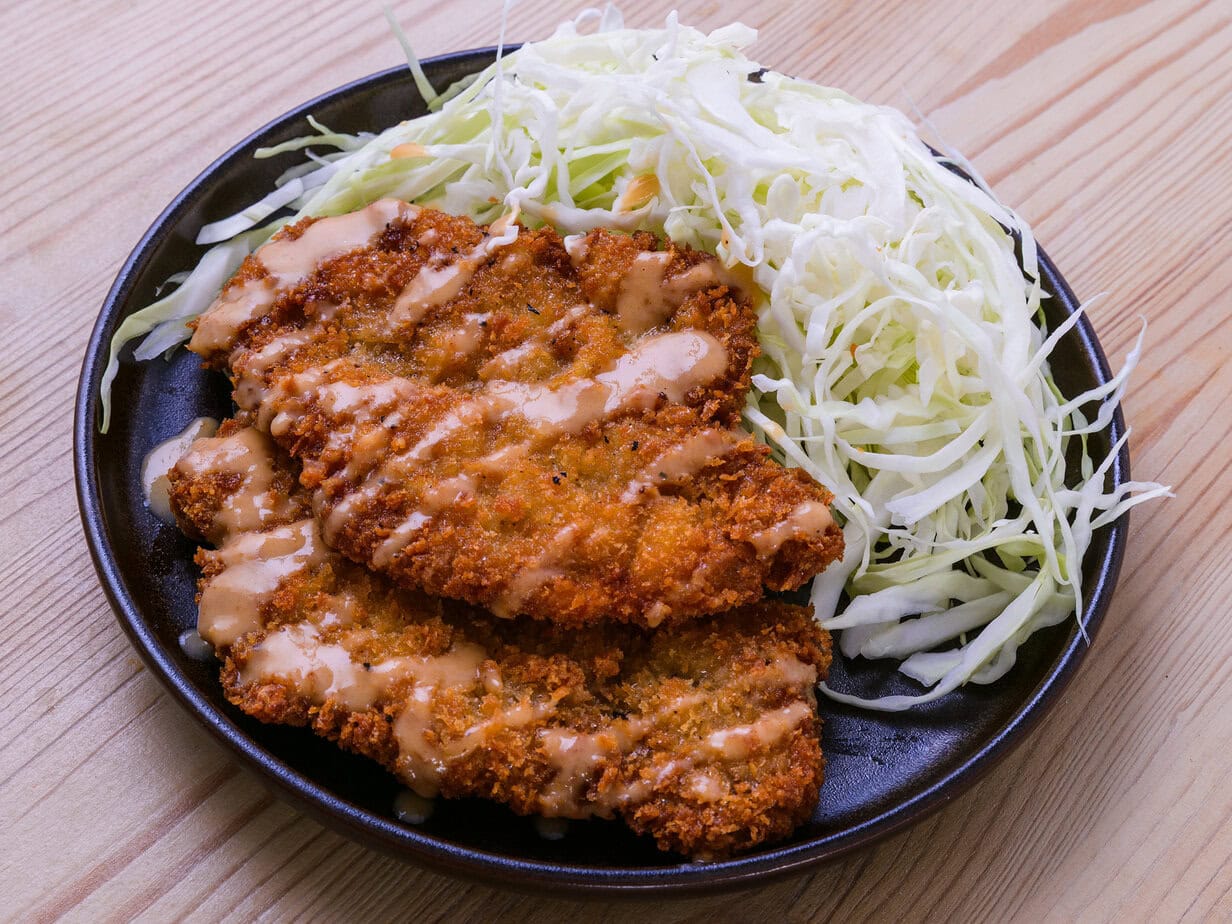
Authentic Korean Donkatsu – Korean Breaded Pork
Ingredients
- 2 pork fillets about 200 g each
- 2 eggs
- 2 pinches salt
- black pepper
- panko breadcrumbs
- flour
- oil
Sauce
- 2 tablespoons of sugar
- 2 tablespoons ketchup
- 2 tablespoons of oyster sauce
- 300 ml water
Roux
- 2 tablespoons of butter unsalted
- 2 tablespoons flour
- 160 ml of milk
Side dishes
- shredded cabbage
Instructions
Meat Preparation
- Use a meat mallet or other utensil to pound the pork fillets flat and wide.2 pork fillets

- In three separate deep plates, place the beaten eggs, panko breadcrumbs, and flour.2 eggs, panko breadcrumbs, flour
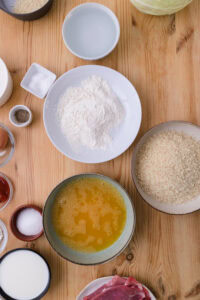
- Coat the meat in flour, then shake off the excess lightly.
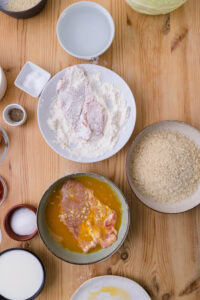
- Dip the meat in the egg.
- Coat the meat in breadcrumbs, then press gently with the palm of your hand to make the breadcrumbs adhere well.
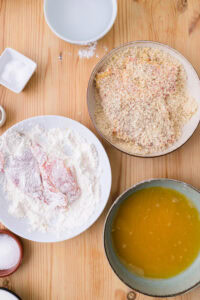
Sauce Preparation
- Mix sugar, ketchup, oyster sauce, and water in a bowl.2 tablespoons of sugar, 2 tablespoons ketchup, 2 tablespoons of oyster sauce, 300 ml water

- Melt the butter in a saucepan over medium heat.2 tablespoons of butter
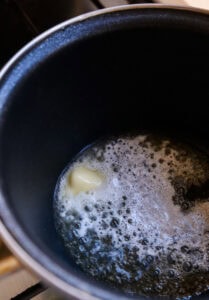
- Add flour to the melted butter and cook until the mixture turns slightly brown.2 tablespoons flour
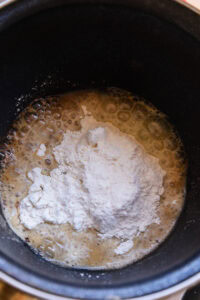
- Add the sauce mixture to the saucepan.
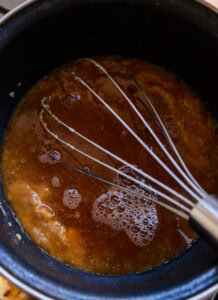
- Mix well and bring to a boil over medium heat.
- When the sauce thickens, add milk and mix well.160 ml of milk
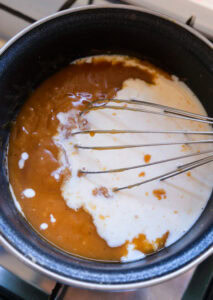
- Once the milk is incorporated, turn off the heat.
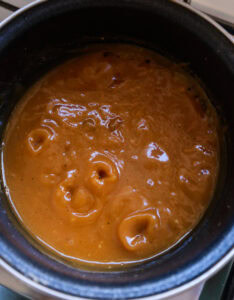
Frying
- Fry the meat for 1 minute on each side at 180 degrees Celsiusoil
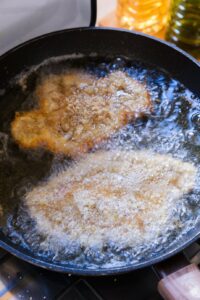
- Let rest for 5 minutes.
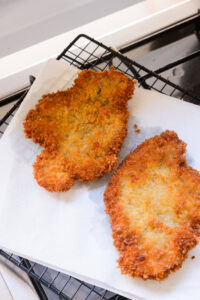
- Fry again for 30 seconds on each side.
